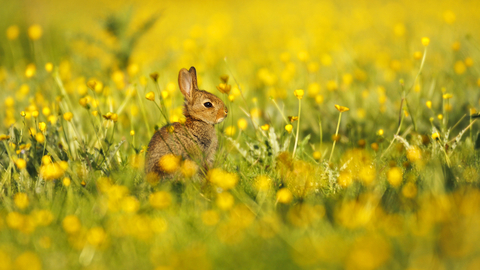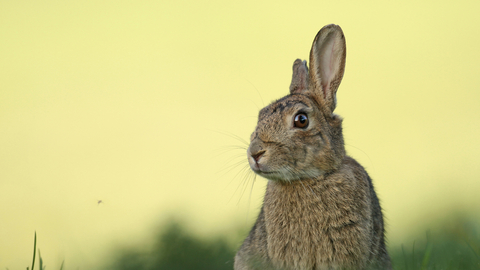
©Jon Hawkins

©Jon Hawkins
Rabbit
Species information
Category
Statistics
Length: 40cmWeight: 1.2-2kg
Average lifespan: 3 years
Conservation status
When to see
January to DecemberAbout
Most people have spotted these adorable animals grazing in long grasses looking for their favourite foods. They were first introduced to the UK by the Normans for food and fur but are now a common sight for many. They live in large groups in underground burrow systems known as ‘warrens’. Female rabbits, called ‘does’ produce one litter of between three and seven babies every month during the breeding season – that’s a lot of little ones! Rabbits make a tasty snack for stoats, buzzards, polecats and red foxes, which is why having a warren to hide in for shelter is so important.How to identify
The rabbit is grey-brown in colour, with long ears and hind legs, and a fluffy white tail. It is smaller than the brown hare and does not have black tips on its ears.In our area
The Isles of Scilly doesn't have any native land mammals, but you still might encounter introduced species including rabbits. Rabbits were introduced to Great Britain by the Normans and have long been associated with islands, where they introduced as a food store. They can be considered pests, but their impacts on Scilly's native flora and fauna aren't currently well understood. You can see them right across the islands, but they are surprisingly elusive, often more apparent from their droppings. You might even see one of the more unusual rabbits that we get on the Isles of Scilly, including individuals with jet black fur. Rabbits are widespread in Great Britain, however, they are declining significantly and are classified as ‘near threatened’ on the IUCN red list.
Distribution
Widespread.Did you know?
The rabbit is native to Spain and was introduced to this country by the Normans in the 12th century to provide food and fur.Watch
Tom Hartwell
